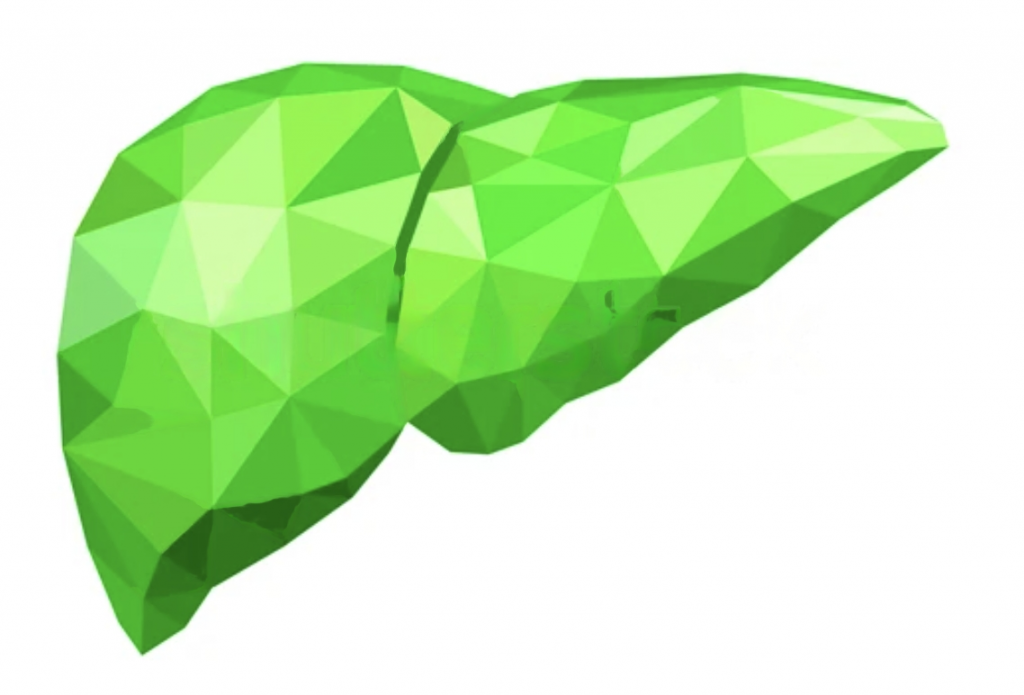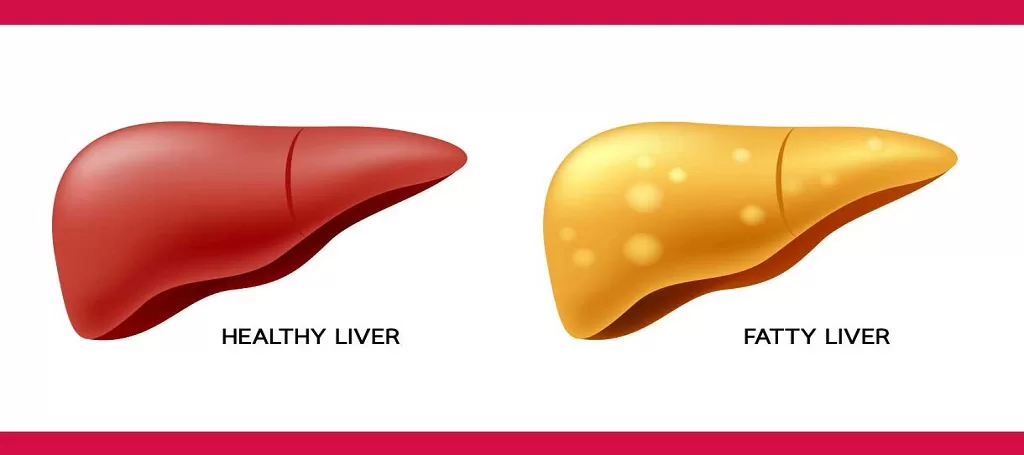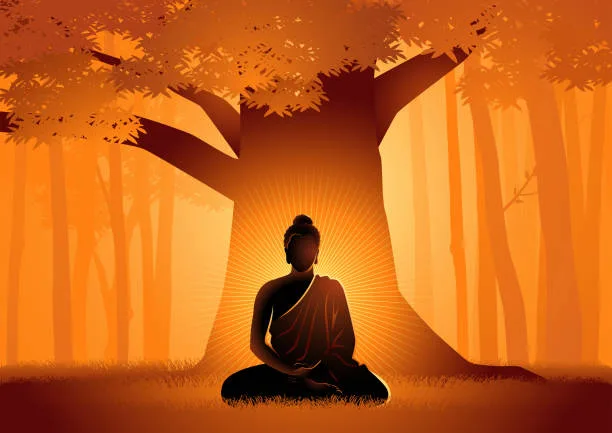Ayurveda and traditional Chinese medicine both say that liver congestion is caused by heat that gets stuck in the organ, and they both use dietary changes and herbs to clean and cool the liver. The liver is a built-in multitasker that does many different things, including helping to produce proteins, break down hormones, remove toxins from the bloodstream, and play a significant part in metabolism.
Ayurveda calls the liver “hot” or “pittic” because its many functions are guided and supported by the fiery, dynamic energy of pitta, which is one of the three doshas (along with vata and kapha) that control how the body works. However, too much fiery energy can build up in the liver and result in health issues.
In traditional Chinese medicine, the symptoms of too much pitta are the same as those of “liver fire.” These symptoms include headaches, flushed skin, red, burning eyes, acne, nosebleeds, and outbursts of anger that don’t make sense. Inflammation, allergies, and digestive signs (like heartburn) are all added by Ayurveda.
Changes in lifestyle, like eating cooling foods, working out often, and taking regular breaks, are often enough to bring pitta back into balance. The liver is characterized as a flaming, heated organ in Ayurveda. This fact alone indicates a direct connection between the liver, agni (the fire principle), pitta dosha, and the energy of change from a qualitative perspective.

Ayurvedic Principles Of Understanding Liver Functions
Ayurveda says that the liver is where the following substances, pathways, and energies meet or are affected:
Agni
The internal metabolic fire is known as agni. Agni is a force that changes things all over the body and has a lot of different jobs.
Ayurveda talks about at least 40 different ways that agni shows up in the body. Five of these, called bhuta agni, are only found in the liver. Our food is functionally converted into biologically beneficial compounds by the bhuta agni.
The digestive process breaks down the five elements (earth, water, fire, air, and ether) into their most basic forms. The bhuta agni (one for each element) then changes these elements into a form that the body can use. Only this purer chemical is really transported by the circulation to the tissues.
Pitta Dosha and its Subtypes
Pitta basically consists of the components of fire and water. All of the body’s heat originates from it. Both the liver and the gallbladder are important pitta sites, which shouldn’t come as a surprise.
Additionally, the small intestine, which serves as the principal seat (home) of the pitta, is where the bile ducts empty. This flow from the liver and gallbladder into the small intestine shows how the liver and gallbladder work together and how pitta moves through the body.
A quick look at the five subtypes of pitta makes it clearer how pitta, the liver, and the gallbladder all work together.
Pachaka Pitta
The small intestine and the stomach are where pachaka pitta is found. Food digestion, absorption, and assimilation are its main duties. It collaborates closely with jathara agni, which controls agni throughout the body and is even seen as a part of it.
Pachaka pitta, which is the power of fire, heat, and change, has a lot to do with how the liver digests food.
Ranjaka Pitta
Ranjaka pitta is mostly in the liver and spleen, but it can also be found in small amounts in the stomach. Ranjaka pitta is the pitta subtype that has the strongest ties to the liver out of all the others.
Ranjaka, a Sanskrit term, means “to provide color.” All body tissues, including the blood, are colored by ranjaka pitta (it even influences skin, hair, and eye color). Also, ranjaka pitta makes bile and liver enzymes. It also controls how plasma (rasa dhatu) turns into red blood cells (rakta dhatu).
Alochaka Pitta
The eyes contain alochaka pitta, which is essential for seeing. It enables the perception of both color and light. Alochaka pitta also controls how bright the eyes are, what color they are, and how clear they are.
Alochaka pitta, which is found in the eyes, and ranjaka pitta, which is found in the liver, have a strong connection that points to a direct link between the two. The sclera of the eye may turn yellow due to liver conditions. similar to how liver damage might result in eye problems or light sensitivity.
Bhrajaka Pitta
The pitta bhrajaka is found in the skin. One of its most important jobs is to keep the skin’s color, texture, warmth, and moisture. This indicates that bhrajaka pitta mostly affects our skin’s shine and complexion.
Also, this subtype makes it easier for the body to digest and process drugs that are put on or absorbed through the skin. Similar to the eyes, the skin and the liver have a relationship, so a variety of skin issues can be linked to problems with the liver.
Sadhaka Pitta
Both the brain and the heart contain the sadhaka pitta. It is in charge of emotions and conscious thought. Our mental state can be significantly impacted by problems with ranjaka pitta, which is present in the liver.
There is also a strong relationship between certain emotions and the liver, which we will discuss in a moment. This relationship reflects the relationship between the liver and sadhaka pitta.

Rakta Dhatu
While in the West we tend to think of the blood as a single thing, in Ayurveda the blood is divided into two different tissues. from each other. Instead, it’s because they have very different physiological functions and look very different. This isn’t because these two tissues are physically distinct
Rasa dhatu (plasma) is a nourishing, cooling substance connected to lunar and feminine forces. It is seen as chilly, sluggish, and calming, similar to kapha, and it provides nutrients to all of the body’s cells.
The oxygen-carrying part of the blood, or rakta dhatu (made up of red blood cells), is linked to pitta dosha, the masculine, and the sun’s rays. It is thought to be scalding, cutting, and penetrating. The liver, pitta dosha, and rakta dhatu are all pretty similar in terms of how they work, and they all have a close functional connection.
In actuality, the liver serves as the mula (root) of the rakta vaha srotas (the channel system connected to this oxygen-carrying portion of the blood), and during the early stages of embryonic development, the liver almost entirely controls the production of red blood cells before that responsibility gradually passes to the bone marrow.
It is also important that rakta dhatu makes bile, which is also called poshaka pitta and is a key part of the liver’s lipid metabolism.
Feelings that are Rooted in the Liver
The liver is an important part of processing emotions, especially those that are close to the liver, just as it is important for processing food and nutrients. The liver is thought to be the location of resentment, hatred, and fury. Envy, irritation, frustration, impatience, and excessive ambition are also associated with it.
All of these angry feelings are signs of an out-of-balance pitta dosha, which is not surprising. acceptance, and submission. But the liver is also connected to pitta’s more positive traits, such as courage, self-confidence, happiness, satisfaction, excitement, cooperation, acceptance, and submission.

The types of emotions you frequently experience can reveal a lot about the condition of your liver. Seeing how well you can deal with and get past the more difficult emotions is also a good way to learn. Do they overwhelm you instantly and completely? After some time, are you able to let them go completely? Or can you hold onto bitterness and fury for a very long time?
It may be more difficult to process and let go of these feelings if the liver is compromised. Similar to this, the liver can surely be harmed by unreleased wrath and resentment.
Similar takes to Similar
As we’ve seen, the liver is closely linked to both Agni and almost every part of the pitta dosha. Because of this, the liver is very sensitive to too much heat, and most hepatic imbalances are caused by or worsened by too much pitta.
This isn’t to argue that Vata and Kapha are never at play when there is an imbalance in the liver. They most certainly can be. But because the liver is hot and fiery, both kapha and vata liver imbalances tend to make pitta worse, causing it to build up and get stuck in the belly.
Even diseases of the digestive tract caused by the pitta dosha, like peptic ulcers and hyperacidity, are often caused by liver and gallbladder organs that don’t work right. Pitta imbalances are typically fiery and inflammatory in character. So keeping an eye out for these kinds of abnormalities and treating them as soon as possible naturally aids in maintaining the liver’s and gallbladder’s health.
Possible Modifications to Your Style:
Due to the obesity pandemic, everyone is worried about body mass index. However, nonalcoholic fatty liver disease (NAFLD), a condition that often goes along with obesity and affects 20–40% of people in the West, also needs our attention. It’s a sign of what TCM and Ayurveda call “liver congestion,” which shows up on the outside. Undigested fat literally clogs the liver (triglycerides).
This syndrome has been linked in studies to rising levels of poor-quality food consumption (particularly high-fructose corn syrup and trans fats). Recent studies support TCM and Ayurveda in that lifestyle changes like diet, moderate exercise, and stress reduction can treat NAFLD and enhance liver function.
Energize Your Liver
According to traditional Chinese medicine, there are “four gates”—two acupuncture sites each at Liver 3 (Taichong) and Large Intestine 4—that can be used to release liver stagnation (Hegu). These can be found on the fleshy area between your thumb and index finger on both of your hands, as well as in the hollow between your big toe and second toe on your feet. You can stimulate the flow of chi (the vital life force, or equivalent of prana), and blood, and reduce stress and anxiety throughout your body by massaging them as described below:
Taichong: Knead for 30 seconds while placing your right heel in the gap between your left foot’s big and second toes (this is like doing Liver 3 on your hands). Repeat by reversing the feet.
Hegu: Massage for 30 seconds with your right thumb pressed in between the bones on your left hand’s thumb and index finger. Reverse the hands and continue.
Advantages Of Following A Pitta-Balancing Lifestyle
Pitta produces a powerful digestive fire as well as warmth and energy on a physical level. Strong Pittic constitutions make persons mentally clever, well-organized, productive, and diligent. Pitta-dominant people, on the other hand, can easily get hot, sweat a lot, and get angry when they are hungry or frustrated. They frequently have perfectionists and critical temperaments put in long hours at work, and push themselves to the limit.
An already hot physical system is made even hotter by this intense mental state. Of course, not everyone has a pitta constitution, but stress, spicy foods, and even the summer sun may make anyone overheat, which can result in an excess of pitta, inflammation, headaches, skin rashes, allergies, high blood pressure, or liver congestion. Here are some suggestions for managing pitta:
Disclaimer:
This information is for educational purposes only, and no medical advice should be inferred from it. Before changing your diet or adding supplements, please talk to your doctor.
The author’s views are his or her own. The facts and opinions in the article have been taken from various articles and commentaries available in the online media and Eastside Writers does not take any responsibility or obligation for them.
Note: Contact our Writers at www.eastsidewriters.com for writing Blogs/Articles on any niche. We have experts in various domains from Technology to Finance and from Spirituality to Lifestyle and Entertainment.







Pingback: Bad Lifestyle-The Reason For Your Liver Dysfunction Leading to Liver Cirrhosis - Eastside Writers
Pingback: Indian Herbs Having Potential And Proven Benefits To Make Your Liver Healthy - Eastside Writers
Pingback: A Comprehensive Guide About Gallstones With Symptoms, Cause And Its Treatment - Eastside Writers
Pingback: Beyond the Burn: Uncovering the Hidden Dangers of Peptic Ulcers - Eastside Writers